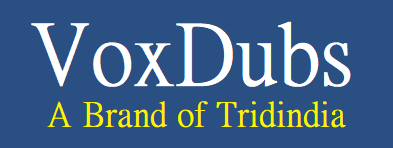Dubbing is a fascinating and essential aspect of the entertainment industry, particularly for films, television shows, and animations.
It involves the process of replacing the original dialogue of a video with a translated version in a different language while preserving the original lip movements and emotions of the characters.
This seamless synchronization between the spoken words and the on-screen actions requires meticulous attention to detail and skillful execution.
In this comprehensive guide, we will explore the art and science of dubbing techniques, shedding light on the intricacies involved in bringing translated voices to life.
The Importance of Dubbing
Dubbing serves as a bridge between cultures and languages, enabling global audiences to enjoy foreign productions in their native tongue. It facilitates storytelling across borders, fostering a deeper connection between the content and its viewers.
Without dubbing, language barriers would hinder the international distribution of media, limiting the impact of films and TV shows on a global scale.
The Process of Dubbing
1. Translation: The dubbing process begins with an accurate and culturally sensitive translation of the original script.
Translators must not only convey the literal meaning of the dialogue but also capture the nuances, humor, and cultural references present in the original language.
A good translation is crucial for maintaining the essence and authenticity of the content.
2. Adaptation: Once the translation is complete, the script undergoes adaptation to ensure that the words align with the lip movements of the characters.
This process sometimes involves rephrasing or shortening the lines to match the timing precisely. Skilled adaptors strike a delicate balance between staying true to the original intent and ensuring a natural flow in the dubbed language.
3. Voice Casting: The selection of voice actors is a critical step in dubbing. Voice actors must not only have an excellent command of the language but also possess the ability to emote and convey the character’s personality effectively.
Matching the voice actor’s tone with the original actor’s voice adds to the authenticity of the dubbed version.
4. Voice Recording: The voice actors record their lines while watching the original footage. This synchronous process ensures that the new dialogue seamlessly fits the characters’ mouth movements, making it appear as if the actors are speaking the new language.
The recording sessions may require multiple takes to achieve the desired quality.
5. Post-Production and Mixing: After recording, the audio undergoes post-production, where sound engineers clean the audio, adjust volume levels, and add any necessary sound effects.
Proper mixing is vital to ensure that the dubbed voices blend smoothly with the original soundtrack and background sounds.
Challenges in Dubbing
Dubbing presents several challenges that demand the utmost skill and dedication from the dubbing team:
1. Lip Sync Accuracy: Achieving perfect lip sync in the dubbed version can be incredibly challenging, as different languages have varying speech patterns and syllabic structures.
The dubbing team must painstakingly match the new dialogue to the character’s lip movements without compromising the translated content.
2. Cultural Sensitivity: Translating cultural references and idioms requires a deep understanding of both the source and target cultures. Failure to handle cultural nuances appropriately can lead to misunderstandings or loss of intended humor in the dubbed version.
3. Emotional Delivery: Capturing the emotions and intensity of the original performances is crucial in dubbing. Voice actors must convey the same level of emotion to evoke the intended reactions from the audience.
4. Maintaining Voice Consistency: In long-running TV series or franchises, maintaining voice consistency for recurring characters is essential. Changes in the voice actor can affect the viewers’ connection with the character.
Conclusion
Dubbing is an art that brings together language, performance, and technology to create a seamless and immersive experience for audiences worldwide.
Through careful translation, adaptation, voice casting, recording, and post-production, the dubbed version can retain the essence of the original content while making it accessible to diverse audiences.
The success of dubbing techniques lies in the ability to transcend linguistic barriers, enrich storytelling, and foster a shared appreciation for the art of cinema and television on a global scale.
For more information contact VoxDubs at +91-8527599201 or grab an instant quote.
